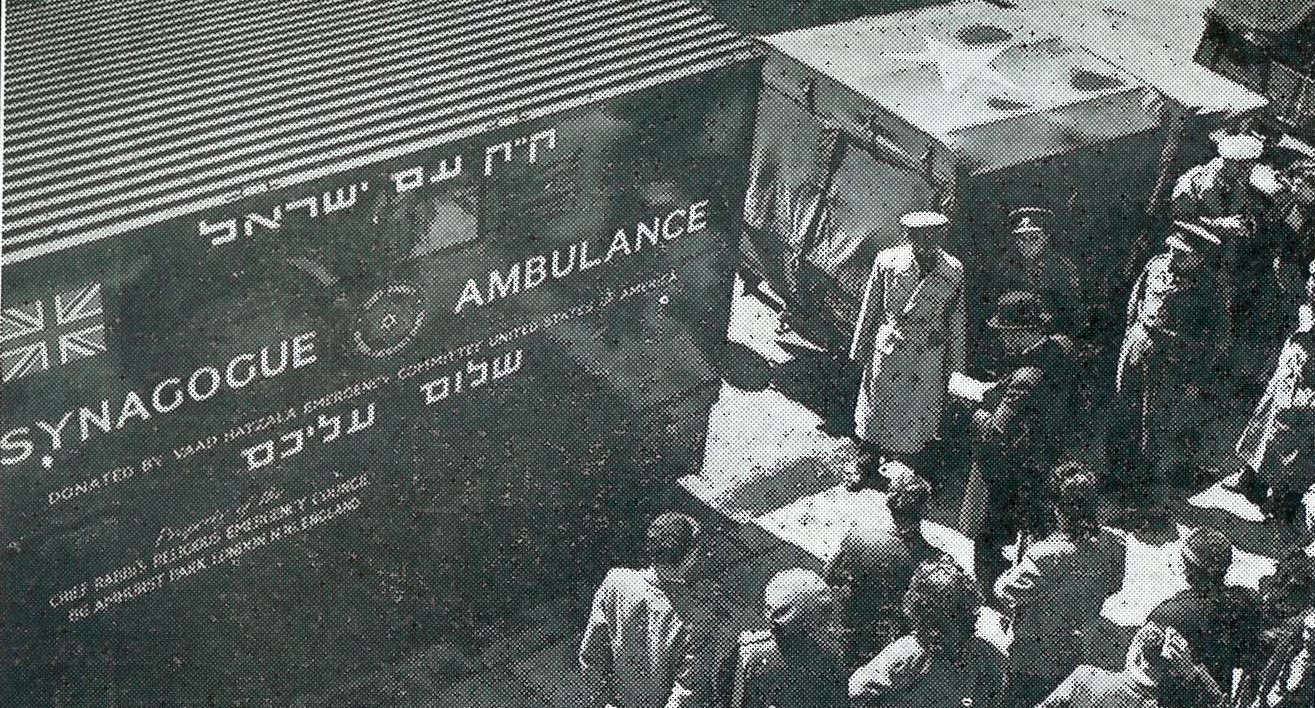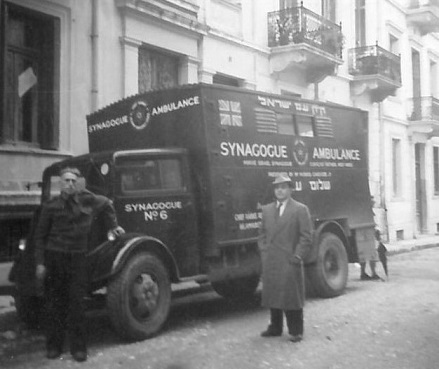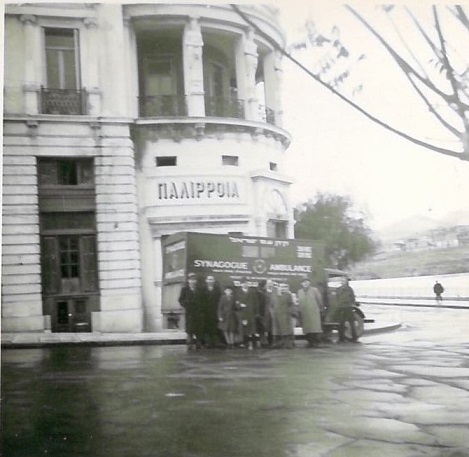In the spring of 1923 and then again in the late summer of 1924 through to the spring of 1925 a young lady named Iris Castello travelled from her home in England to Palestine. She was the niece of Herbert Louis Samuel, 1st Viscount Samuel – a Liberal politician who served as leader of the Liberal Party from 1931-5 as well as Home Secretary in the National Government under Ramsay MacDonald from 1931-2. He also served as the first High Commissioner for Palestine from 1920 to 1925 and it was in this capacity that Iris accompanied her uncle and other family members and friends in the course of both official and informal events on their travels through Palestine.
Special Collections hold the diary entries kept by Iris in our collection MS432, documenting her experiences in Palestine and giving us a fly-on-the-wall account of the work of the High Commissioner and the world of the British elite at this crucial period in Middle East history. Iris was based in Jerusalem but ventured far and wide to various places including Nazareth; Amman in what was then the Emirate of Transjordan; Damascus in Syria and Baalbek in Lebanon to name just a few.

Countryside at Bethany from MS84/3, Bundle 1, p1: Iris visited Bethany twice, once in March 1923 and again in January 1925, when she visited the tomb of Lazarus
The diaries range from the mundane and rather prosaic details you’d expect from most amateur writers keeping day-to-day accounts of their travels through a foreign land, such as their notes on the weather, the quality of their bedding, games of badminton, ping-pong and Mah-jong or the tedious and tiresome characters one is forced to endure at parties and other gatherings. However, they also include unique details of historical interest on the characters and settings of 1920s Palestine and the Near East more generally.
Amongst the more prominent characters Iris encountered was the Emir Abdulla of Transjordan, who visited her uncle Lord Samuel on 11th September 1924 and whom she described as “a good looking man with a nice twinkle. He is very worried about the Whabis marching to Taif & came over to discuss with Uncle Herbert.”
Soon after this initial encounter ‘Uncle Herbert’, Iris and others in their entourage travelled to meet again with the Emir at his camp in Amman:
After an early tea Col Cox escorted us to the Emir’s Camp right up on the top of a hill. Very fresh & cool. As Uncle Herbert stepped out of the car ‘God Save the King’ was played. We watched the little Prince and others galloping their horses, it was then prayer hour so we were shown to our tents to remain there till dinner time.
Uncle Herbert had a large tent divided into a bedroom & sitting room. May & I shared a small tent, so did Professor Wallas & Reggie. Our tent was furnished with two extremely uncomfortable beds, two chairs & a washstand. The first thing I did was to anoint my bed thoroughly with Keatings and thus escaped any visitors.
At 7.30 an official dinner party was given. Decorations were worn. The Emir looked very magnificent in some sort of military uniform. We were 30 altogether. I sat between the doctor and the Chief Justice. The doctor was an extremely interesting man and spoke excellent English.
The dinner was badly cooked & dull food. We started off with luke-warm soup, then some sort of pastry, chicken & rice, beans done up, macaroni, fancy rice, mutton done up, a very sickly pudding & dessert. The Emir must be short of forks because after each course our dirty fork was left for the next course. Only water to drink. After dinner we returned to the Emir’s tent and after chatting up for a short time we retired to our tents & bed. An extremely interesting & novel experience.
Iris also describes in some detail the visit of Lord Balfour to Palestine in March and April of 1925:
The next excitement & a national one was the arrival of the Balfour party. The city was quite deserted, because all the Arab shops were shut as a sign of protest & the Jewish shops as a sign of rejoicing. There was no demonstration at all.
Mixed in amongst descriptions of some of the better known characters from modern history are the more obscure individuals who peopled Iris’ world and the manner in which she describes them puts one in mind of an Agatha Christie novel, with all the prejudices and predilections a young English woman of the middle or upper classes of that era might hold. On 26th September 1924 Iris meets a Dr Weizmann who, unfortunately was “not at all what I expected. Very much the Lenin type. Rather silent but this was put down to overwork.” On 3rd March 1923 she met another doctor: “At lunch the doctor became conversational. I did not like him.” On 1st October 1924 yet another doctor: “I was taken in by Col Holmes (Head of the Railways) a fat jovial man & sat between him and Wing Commander Tyrrell the doctor at Sarafend. Very Irish & rather noisy.”

Jerusalem as it would have looked in the 1920s, from MS84/4 Bundle 6
In her travels through Palestine Iris encountered many of the archaeological excavations that were taking place there at that time, including those in the Valley of Kidron at Jerusalem:
[…] went in the car to the Tomb of Absalom, and from there walked to the City of David to have a look at Macalister’s Excavations. No one working, but we found the guardian there whose duty it is to keep visitors away. He turned into an excellent guide.
We saw the corners of the old wall of David and some very interesting caves that have been discovered & are still being excavated.
Professor Wallas had some difficulty in getting down the rather narrow gangway to the caves, so the guide just lifted him up & gave him a pig-a-back. No light weight, but a most amusing sight
Iris was invited to many talks and lectures given at the British School of Archaeology including one held by a Dr Karlie on malaria which she deemed ‘rather interesting’; one given by a Mr Garrow Duncan on Mount Ophir that she found ‘wonderfully interesting’; and another by a Dr Grenfell on Labrador that was both ‘interesting and brightly delivered’.
However, both Iris and her uncle also endured talks that were less well received, including Professor Gastang’s fourth lecture on excavations in Jerusalem given on Monday 17th November 1924: “It was boring, but Uncle Herbert expected it to be as he told me to nudge him if he fell asleep.”

The countryside near Jerusalem, from MS84/4 Bundle 6
As a young woman on the fringes of her uncle’s official business in Palestine, Iris’ diaries carry an often light-hearted even flippant tone that allows the reader to enter into the world of British colonial politics in the Near East through the lens of an informal and somewhat unserious yet highly perceptive observer.










![Men's football team, 1953-4 [photo_MS1_7_291_22_4] Men's football team, 1953-4 [photo_MS1_7_291_22_4]](https://live.staticflickr.com/65535/50089268168_f26eed63ef_s.jpg)
![Women's rowing team, 1961-2 [MS1_7_291_22_4] Women's rowing team, 1961-2 [MS1_7_291_22_4]](https://live.staticflickr.com/65535/50090079577_3b7acbde42_s.jpg)
![Men's rugby team, 1953-4 [MS1_7_291_22_4] Men's rugby team, 1953-4 [MS1_7_291_22_4]](https://live.staticflickr.com/65535/50089268523_4f2c587220_s.jpg)
![Women's hockey team, 1953-4 [MS1_7_291_22_4] Women's hockey team, 1953-4 [MS1_7_291_22_4]](https://live.staticflickr.com/65535/50090079692_28114e9c7d_s.jpg)